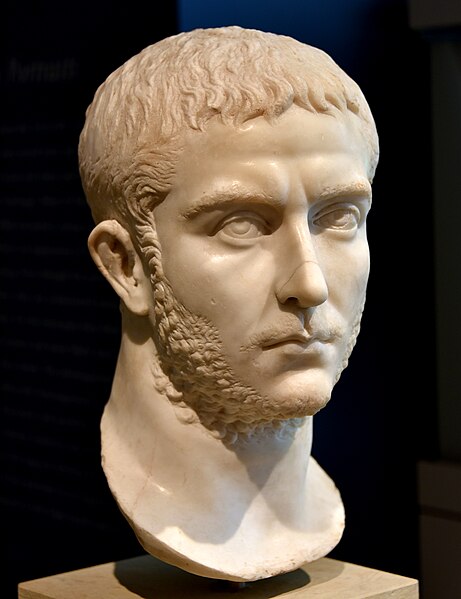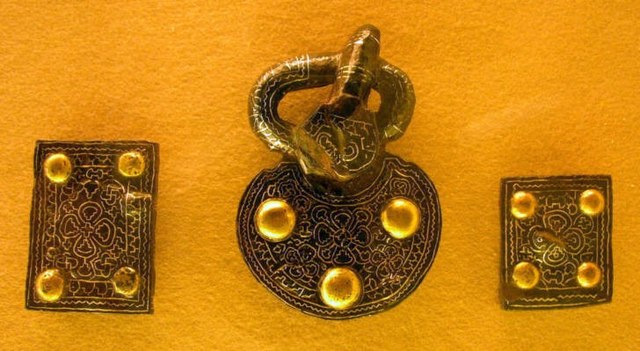Marcus Aurelius Claudius "Gothicus", also known as Claudius II, was Roman emperor from 268 to 270. During his reign he fought successfully against the Alemanni and decisively defeated the Goths at the Battle of Naissus. He died after succumbing to a "pestilence", possibly the Plague of Cyprian that had ravaged the provinces of the Empire.
Gold medallion (worth 8 aurei) depicting Claudius Gothicus. Legend: imp c m aurl claudius p f aug
Antoninianus of Claudius II. Legend: IMPerator Caesar CLAVDIVS AVGustus
Roman emperor Gallienus, (r. 253–268 AD)
Possible bust of Claudius, Santa Giulia Museum, Brescia (Italy).
The Alemanni or Alamanni were a confederation of Germanic tribes on the Upper Rhine River during the first millennium. First mentioned by Cassius Dio in the context of the campaign of Roman emperor Caracalla of 213, the Alemanni captured the Agri Decumates in 260, and later expanded into present-day Alsace and northern Switzerland, leading to the establishment of the Old High German language in those regions, which by the eighth century were collectively referred to as Alamannia.
Alemannic belt mountings, from a seventh-century grave in the grave field at Weingarten
The Limes Germanicus 83 to 260 CE
The gold bracteate of Pliezhausen (sixth or seventh century) shows typical iconography of the pagan period. The bracteate depicts the "horse-stabber underhoof" scene, a supine warrior stabbing a horse while it runs over him. The scene is adapted from Roman era gravestones of the region.
The seventh-century Gutenstein scabbard, found near Sigmaringen, Baden-Württemberg, is a late testimony of pagan ritual in Alemannia, showing a warrior in ritual wolf costume, holding a ring-spatha.








